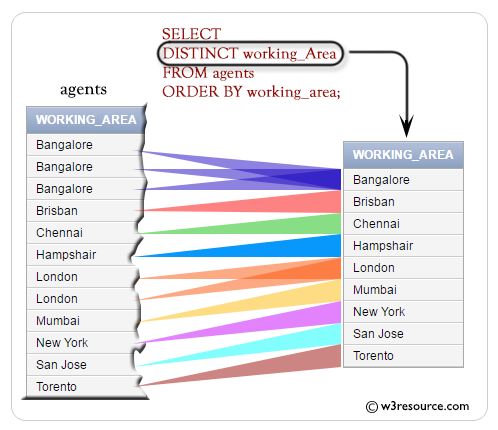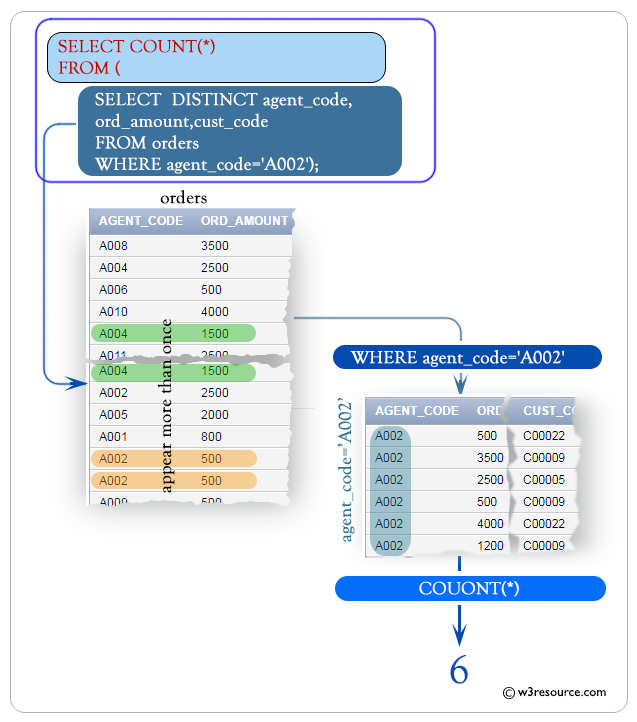How do you select multiple columns from a table while ensuring that one specific column doesnt contain duplicate values? Supposing we have a table with four columns (a,b,c,d) of the same data type. Is it possible to select all distinct values within the data in the columns and return them as a single column or do I. Use an appropriate query style depending on what you want to achieve. After executing a select statement the resultant table returns all rows according to the provided expression. We can count distinct values such as in select count (distinct col1) from mytable;.

The COUNT() function is an aggregate function that allows you to get the number of rows that match a specific condition of a query. PostgreSQL COUNT() function overview. I usually do this using a hash collection approach that ends up with distinct entities of each type in a collection based on a key value. There may be a situation when you have multiple duplicate records in a table. DISTINCT for multiple columns is not supported.
It is not uncommon to have duplicate data in the of a query. In that case, two round-trips to the server are required: one to generate the query, the other to run it. With a generated pivot query.
If you sort the result set based on multiple columns , use a comma to separate between two columns. Secon use ASC to sort the result set in ascending order and DESCto sort the result set in descending order. If you leave it blank, the ORDER BYclause will use ASCby default.
Rotating a table with multiple value columns. I have over distinct values in the week column:. It ensures that rows returned are unique for the column or columns specified in the SELECT clause. The UPDATE statement updates data values in a database.
UPDATE can update one or more records in a table. Use the WHERE clause to UPDATE only specific records. MySQL Database Forums on Bytes. INTERSECT binds more tightly than UNION. Multiple Row Subqueries.
You may use the IN, ANY, or ALL operator in outer query to handle a subquery that returns multiple rows. The are sorted in ascending order by city. The columns names a, b, and c are either the actual names of the columns of tables referenced in the FROM clause, or the aliases given to them as explained in Section 7. The name space available in the select list is the same as in the WHERE clause, unless grouping is use in which case it is the same as in the HAVING clause.

Example - Update multiple columns. The latter form is perhaps preferred. Each JOIN clause must have an ON clause, reducing the chance of writing a Cartesian join by accident. You can use more than one column in the ORDER BY clause.
Make sure whatever column you are using to sort, that column should be available in column-list. Now take one example, you want to find the count of Employee based on two columns : Employee Department , Employee Joining Year. By now you know how to create a database, multiple tables, join them and fill them with data.

One of the useful functions of relational databases is their capacity to provide ways to analyze data. Notice that camera caught YLE3twice. Once on 1st December, and again on the 2nd December.
The UNIQUE constraint ensures that all values in a column are different. Both the UNIQUE and PRIMARY KEY constraints provide a guarantee for uniqueness for a column or set of columns. A PRIMARY KEY constraint automatically has a UNIQUE constraint. In SQL Server we can find the maximum or minimum value from different columns of the same data type using different methods. Rolling up data from multiple rows into a single row may be necessary for concatenating data, reporting, exchanging data between systems and more.
This can be accomplished by: Check out the example below to walk through the code samples and final solution to roll-up multiple rows into a single row. Everybody counts, but not always quickly.
Nincsenek megjegyzések:
Megjegyzés küldése
Megjegyzés: Megjegyzéseket csak a blog tagjai írhatnak a blogba.